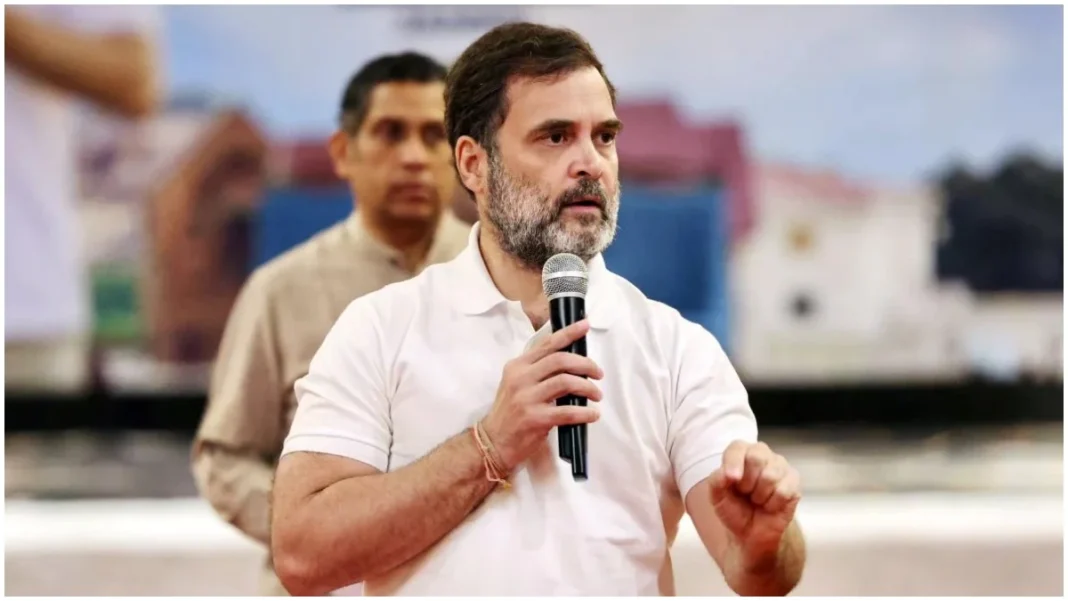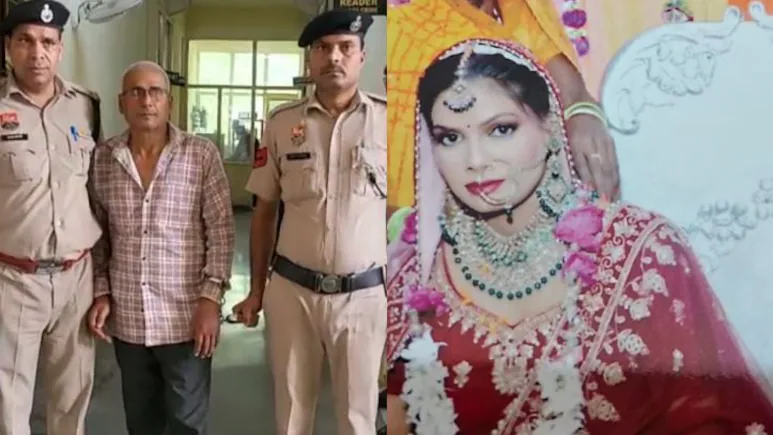In the aftermath of India’s election season, questions around transparency have taken center stage. At the heart of the controversy is Rahul Gandhi’s escalating standoff with the Election Commission of India over surveillance footage, digital records, and the fundamental right to electoral scrutiny. As accusations fly and institutions defend their stance, the public is left grappling with what transparency in a democracy truly means.
Rahul Gandhi’s Face-Off With the Election Commission: Charges of ‘Match-Fixing’ and the Battle for Transparent Polls
In the cacophony of post-election India, a political storm is gathering – not over the results at the polls, but over the very tools used to record and protect democracy. And at the center of it is a bitter confrontation between Rahul Gandhi and the Election Commission of India (ECI) over data transparency, CCTV footage and allegations of electoral rigging. Leader of Opposition in the Lok Sabha, Gandhi has accused the ECI of suppressing and destroying evidence that is crucial to upholding public faith in the election machinery.
The story isn’t just about one state or one election. It raises that fundamental question – what does transparency mean in a democracy? And what takes place when questions are left hanging?
Maharashtra Assembly Polls and the CCTV Controversy
Earlier this month the latest round of friction kicked off with Rahul Gandhi’s call for a full public release of key election data and CCTV footage of the Maharashtra assembly elections. The request seemed simple: unlock the digital vault holding the elections and let the public see for itself. What happened since has been political and institutional trench warfare.
On Saturday, the Election Commission turned down Gandhi’s demand, terming it as “politically motivated”. The demand for release of the booth-level of CCTV footage may even end up reaching that of the level of harassment or profiling of voters, particularly in areas where a party has not performed well, ECI sources were quoted as saying by Hindustan Times. The ECI had argued that such calls were more an issue of “partisan interest” than transparency in a particular electoral process.
But the allegation didn’t land in silence.
Also read, In Faridabad Shocker, Father-In-Law Confesses To Killing, Burying Woman
The Allegation: “Deleting Evidence”
Hours after the ECI’s response, Rahul Gandhi went on X (previously known as Twitter) and voiced his strong opinion against the Election Commission. Referring to a direction of the poll body to state poll officers to delete CCTV, webcasting and video footage after 45 days if election results had not been challenged in any court, Gandhi said this was not administrative instruction, but evidence was being suppressed.
In his post, Gandhi wrote:
“Voter list? Won’t provide in machine-readable format. CCTV footage? Hidden by changing the law. Election photos and videos? It will now be 45 days, not a year, before they are removed. And the person who was supposed to have the answers is the one now deleting the evidence.”
He went one step further with his notorious “match-fixing” slur, saying:
“They say the match is fixed. And a rigged election – a rigged election in reverse is a rig – a rigged election.”
The allegations, apart from adding fuel to a political controversy, have put the spotlight on the process of election data preservation in India.
The 45-Day Rule: Technicality or Strategy?
The source of the dispute is the Election Commission’s order to scrap surveillance and visual records of the polling process 45 days after the results are declared – unless those results are legally contested.
Justifying its move, the ECI said that prolonging the date for viewing the recordings could lead to the dissemination of “misinformation and malicious narratives”, particularly on social media. The poll body said recent instances of selective use of such material by individuals not related to the contest – at times cropping content out of context – warranted the new approach.
This development comes after a review following misuse of content by non-contestants leading to a skewed version being presented to the viewers, a PTI report said. The ECI had also stressed that such content was not invited any legal repercussions but it had lowered public trust and was frivolous.
Rahul Gandhi’s Counter: Plan to Rig the House?
For Rahul Gandhi, though, this is not merely a policy issue – it is an existential challenge to democratic accountability. Calling the 2024 Maharashtra elections a “trailer of how to rig democracy”, Gandhi warned that the same can happen in Bihar and every state where the BJP is resisted electorally.
In a scathing challenge, Gandhi presented a to-do list of specific steps he felt the Election Commission should take to regain credibility:
- Issue digital, machine-readable, consolidated voter lists for the recent Lok Sabha and Vidhan Sabha, including Maharashtra.
- Reveal all CCTV footage recorded post 5 PM of all the booths in Maharashtra.
- Allow full public inspection of all digital records from elections.
Worded in a systemic approach instead of instantly circling towards the circumstantial, Gandhi is fighting for the change he says the process of accessing election data desperately needs. His central charge is that the ECI’s current policy is not a recipe for accountability – it is a recipe for the suppression of scrutiny.
The Election Commission Pushback: Defamation, or Due Process?
Not only has the Election Commission rejected Gandhi’s allegations, but the motive behind such an allegation has been questioned. In a strong reaction, the ECI said it is absurd to denigrate the Constitutional Body after losing in the highest democratic forum in the country – the Elections.
Claiming that Gandhi’s protest is based on his party’s electoral thrashing, the ECI has made a distinction between political commentary with procedural authoritarianism. This view effectively recasts the debate over transparency as one of political grievance, not public purpose.
But sceptics say such reaction is unacceptable in a democracy, where trust is built on transparency, especially in such crucial processes as elections.
The Big Picture: What This Debate Means
This episode raises more general questions:
- Should footage of elections be fed into a shredder 45 days later, or should it be critical for longer for indy testing?
- Who gets to say what is “misinformation” when evidence is putting before the public?
- Is refusal to provide digital electoral data by the state justified out of the need to prevent its misuse or does this violate the right to transparency?
India, the world’s largest democracy, has long held itself out as an example of the power and efficiency of its electoral machinery. But trust, once lost, is hard to regain. The loss of faith in democratic institutions – whether in response to actual mistakes, or because of perceptions of secrecy – has lasting implications for voter turnout, civic involvement and the validity of governance.
A Pattern or a One-Off?
This isn’t the first time the Election Commission’s methods for sharing election data have been put into doubt. Several opposition leaders have in recent years expressed doubt about the transparency and fairness of the electoral process. Although many of these have been derided as political theater, the numbers and frequency of these reports are hard to ignore.
There’s the failure to follow the obvious technical guidelines, the fact that the EVMs do not produce any kind of verifiable voter paper trail, the disparities in the published voter rolls – and now this cutting of the retention of CCTV footage, all of which point to a sense – real or faked doesn’t matter – that the system is contracting in its openness to scrutiny.
The allegations of Rahul Gandhi resonate not only with Congress sympathisers but also with civil society organisations, transparency activists and constitutional custodians.
The Road Ahead: is Credibility Reclaimable?
The question is: what will it take for the Election Commission to be restored to widespread trust?
Transparency, many say, is not a favor but a promise in a democratic system. Gandhi’s call for digital, machine-readable voter lists is not a novel one – plenty of election reformers have been clamoring for such public access for years. Similarly, the principle that CCTV footage from polling stations should be stored (if not necessarily entirely public) is standard in many democracies.
The Election Commission is left to strike a middle path. Can footage be stored longer in secure(ish) environments? Verified pollsters and media could have limited access to the polling data to which they can report on the public side in order to ensure accurate public reporting. Are there stricter checks and balances that can be put in place to stop manipulation without having any sort of data explosion?
The results may not be overnight. But the conversation has begun.
Final Thoughts: Data or Democracy?
Ultimately, this battle is more than files, footage or format. It’s about faith – in the election system, in the public’s institutions, in the ability of citizens to ask questions. It doesn’t really matter whether one takes the ECI’s line or opposes Gandhi and his allegations – the larger point cannot be stretched far beyond the adage that the moment for transparency has never been more intense.
Technology has made its way more deeply into elections, and with it the potential for manipulation – but also the potential for oversight. Whether that digital data becomes digital debris – discarded and forgotten – is a question whose answer falls to political actors and independent institutions alike. Democracy is not furthered when evidence is eliminated, but when it is evaluated.
And in that ethos, the country now waits to see who will blink first – the system or the skeptic.
FAQs
- Why is Rahul Gandhi accusing the ECI of deleting evidence?
Gandhi claims that the Election Commission’s instruction to destroy election-related footage after 45 days constitutes suppression of vital evidence and undermines transparency. - What footage does Gandhi want released?
He demands that CCTV footage from all polling booths after 5 PM in the Maharashtra Assembly elections be made public. - What is the ECI’s defense for deleting footage?
The ECI says the footage could be misused to spread misinformation and that retaining it beyond 45 days is unnecessary unless challenged in court. - What are the transparency reforms Gandhi is asking for?
He is calling for digital, machine-readable voter rolls and public access to all digital election records. - Has this type of accusation happened before?
Yes, multiple opposition parties have raised concerns over EVMs, voter rolls, and election transparency in recent years.
Reference
Stay updated with all the latest news and insights – News Of US






